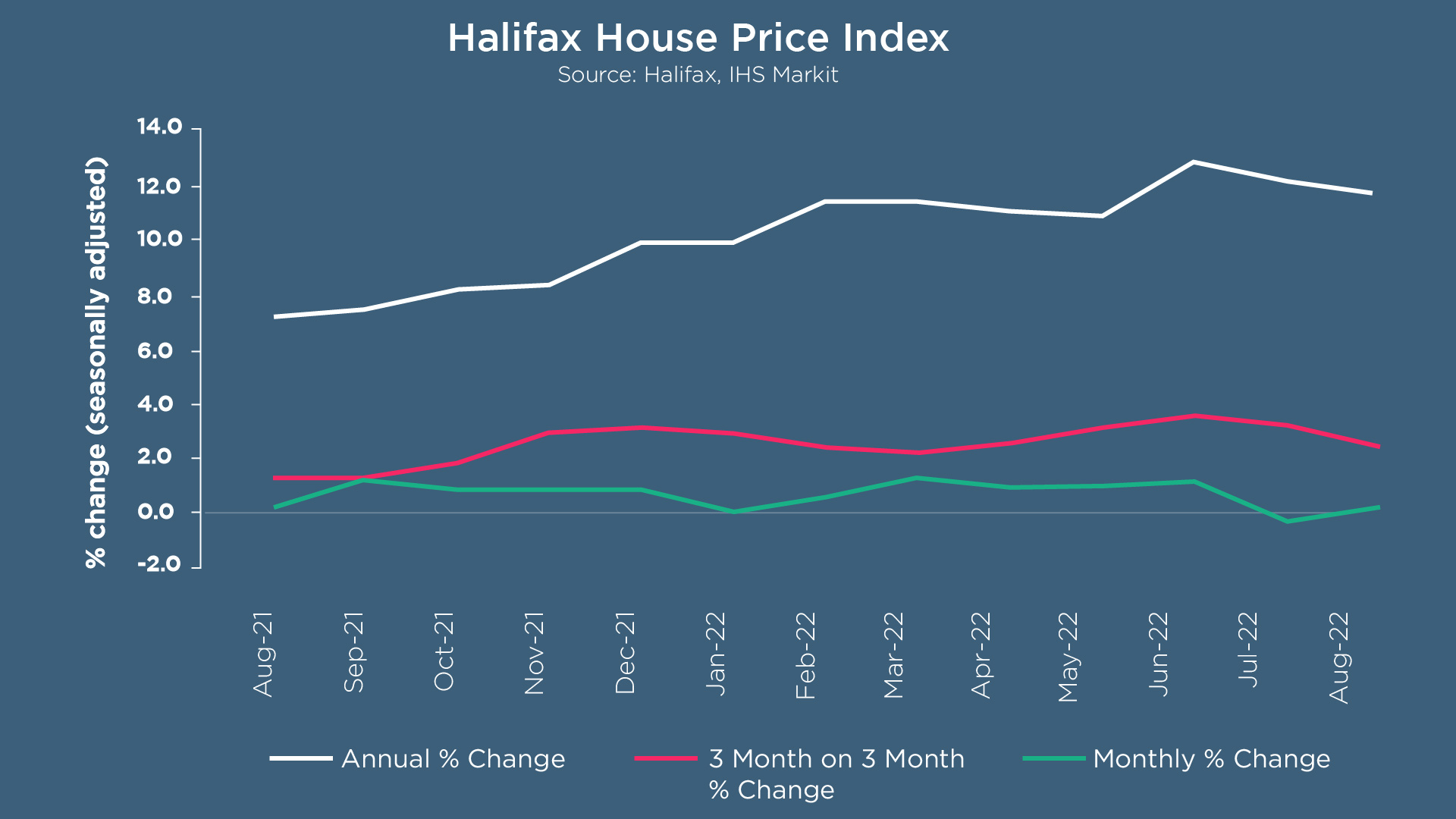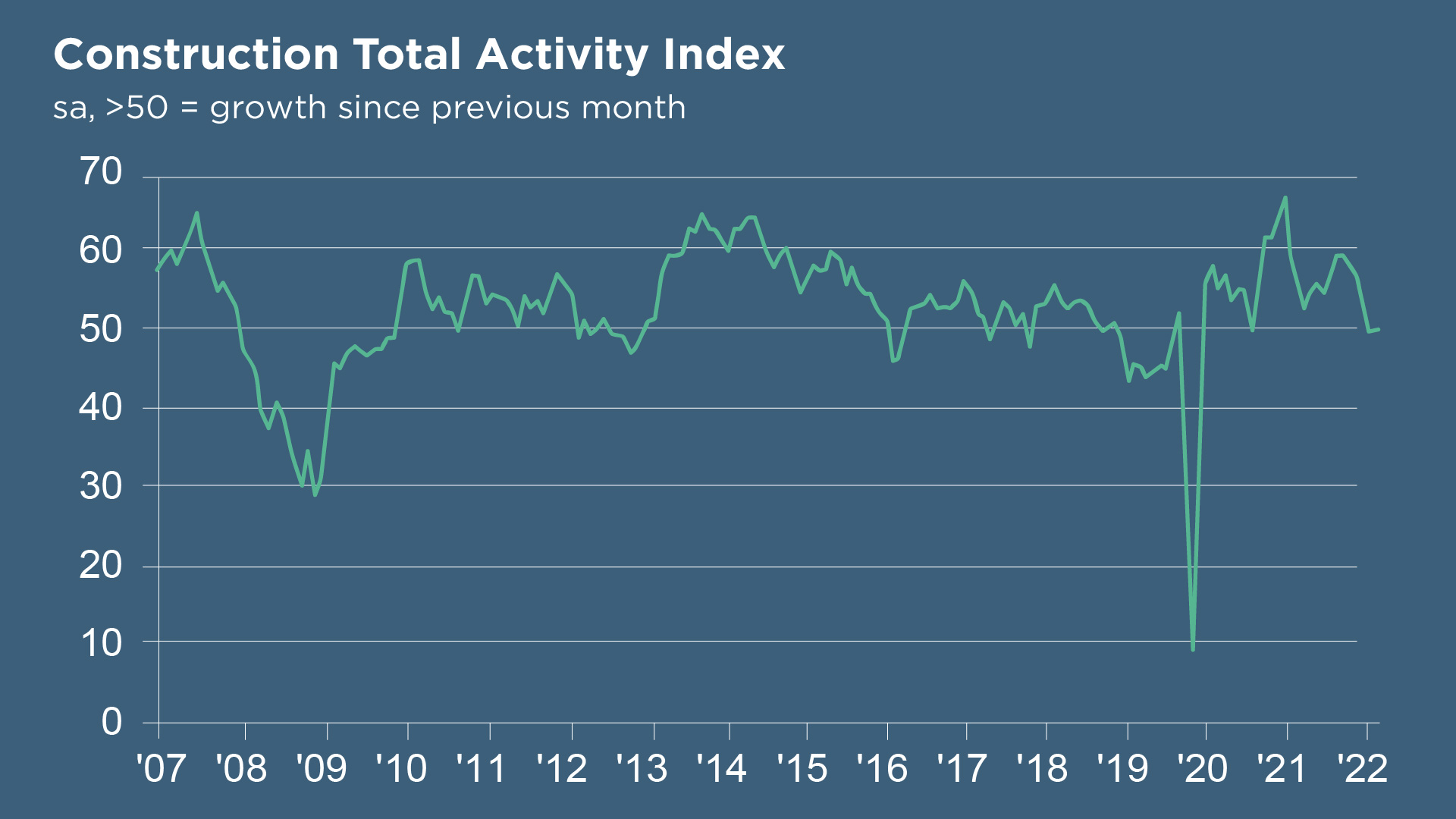Borrow
Case Study
Podcasts
Awards
About
With a new Prime Minister in office, the recent Bank of England vote to raise the interest rate to 2.25%, and the Chancellor's mini-Budget announcement all taking place this month, CrowdProperty reviews the impact of the latest economic and political measures on the ever-changing property market.

According to the latest Halifax House Price Index report, the average house price increased again in August with a typical UK property now costing £294,260 and London recording the highest annual house price inflation in six years. July’s slight fall in prices (-0.1%) has been offset by a return to growth during August. However, the increase (+0.4% month-on-month) could be considered modest when compared to the rapid inflation costs we are currently witnessing with the rate of monthly house price inflation averaging around +0.9% over the last year.

Although the typical house price reached record highs in August, the annual rate of growth dropped to +11.5%, from +11.8% in July, the lowest level in three months. Whilst these record high house prices have proved to be buoyant during times of increased economic uncertainty, industry surveys suggest this will change across the majority of UK regions as buyer demand eases and imply a likely slowdown in market activity. This has largely been attributed to the increased cost of living – before the Chancellor’s Growth Plan was announced, typical household bills had been due to rise to £3,549 a year.
To offset rising energy prices, government policy is set to contribute towards household energy bills: the Energy Price Guarantee will support consumers by capping the unit price of electricity and gas, with an expected average cost of £2,500 per year on household energy bills for a period of two years from October – “a saving of at least £1,000 a year for the typical household” according to Kwasi Kwarteng. This is in addition to the £400 non-repayable discount for eligible households over the coming winter provided by the Energy Bills Support Scheme. Businesses will also receive similar support through the Energy Bill Relief Scheme, which aims to protect non-domestic energy users (including charities and public sector organisations) from rising energy bills. Mr Kwarteng said the energy support plan would cost £60 billion for the six months from October 2022.
Whilst this package of measures provides some relief, borrower costs are also likely to rise as the Bank of England is expected to continue raising interest rates into next year. Furthermore, as house price to income affordability ratios are already historically high, there is expected to be a more challenging period for house prices to come. However, this should be viewed in the context of the exceptional growth in recent years, with average house prices increasing by more than £30,000 over the last 12 months.
As nations across the UK saw annual house price inflation increase, there are regional variations: Wales remains at the top of the table with annual house price inflation up by +16.1%, the strongest level of growth since early 2005 meaning average prices have risen by £31,246 over the last year to £224,858. A strong rate of annual growth in the South West of England also continues, with an average property cost of £313,003, which is up by +14.5%. Northern Ireland’s rate of annual growth reduced further back last month to +12.5%, with a typical home now costing £185,505. Scotland also saw another slowdown in the rate of annual house price inflation, to +9.4% from +9.5%, with an average property costing £204,362. The rate of annual house price inflation in London rose again, which now stands at +8.8%, its highest level in over six years, however London trails behind other nations and regions. A typical London property now costs £554,718, with the capital’s average house price rising by £44,669 over the last 12 months.
As previously noted, current prices are still 10% below the 2007/2008 peak and the same as 2004 levels (adjusting for inflation). Key factors suggest that there’s unlikely to be a major market correction as historically these are related to steep rises in unemployment, which is at its lowest rate for 50 years alongside the number of job vacancies being close to record highs according to Nationwide. Households also have a far greater savings buffer today to mitigate transitory inflation, due in part to extra funds saved during the pandemic. Additionally, the impact of interest rate rises will also be slower as there is a far higher proportion of homeowners without mortgages – according to Zoopla, half of all homeowners have a mortgage and 90% of these are on fixed rate deals for up to 5 years.
Despite house price appearing to soar, there seems to be little negative impact on housing activity according HMRC’s monthly property transactions data, which showed UK homes sales increased in July. Seasonally adjusted (SA) residential transactions in July 2022 totalled 104,470 – up by 3.2% from June’s figure of 101,190 (up 7.2% on a non-SA basis). Quarterly SA transactions (May - July 2022) were approximately 3.9% lower than the preceding three months (February 2022 - April 2022). Year-on-year SA transactions were 36.7% higher than July 2021 (32.9% higher on a non-SA basis).
The Monetary Policy Committee’s (MPC) recent vote to increase the bank rate by 0.5% to 2.25% sees the seventh consecutive increase since the Bank of England cut the rate to 0.1% two years ago as a result of the coronavirus pandemic. This is likely due to lower inflation than was projected in their August report, as a result of the energy price guarantee. Therefore, homebuyers and those looking to re-mortgage may place increasing importance on securing favourable rates quickly before they disappear. This move may see the Bank of England figures which show that the number of mortgages approved to finance house purchases increased in July 2022, by 0.9% to 63,770, increase even further. An estimated 72% of prospective first-time buyers are having to reconsider their plans to buy their first home, as the impact of the current cost of living crisis and rising inflation erodes their finances and makes securing a mortgage a struggle – which begs the question, will they ever climb the first rung of the property ladder?
Rightmove notes a huge market imbalance despite demand for houses softening and supply constraints improving: buyer demand reduced by 4% last month compared to 2021 (although it was still 20% higher than in 2019), however new listing are down 6% and available stock is down 39% on 2019. Despite this, Rightmove’s Director of Property Science Tim Bannister claims “buyer enquiries to agents do not appear to have been particularly dented by the most recent interest rate rise, suggesting that many buyers are still committed to moving, and incorporating rate rises into their financial planning.” Further evidence of first-time buyers’ commitment to stepping on the property ladder is the increase in demand for typical first-time buyer properties, up 32% when compared to the same period in 2019 despite average monthly mortgage payments for those putting down a 10% deposit having now exceeded £1,000.
Stamp duty is another consideration buyers will need to factor into their equations. Following the delivery of Chancellor Kwasi Kwarteng’s mini-budget, Zoopla reports that the latest stamp duty cuts may not significantly mobilise the housing market. The reduction in stamp duty during the pandemic years of 2020 and 2021 certainly increased moving activity, however this was a temporary measure which gave people an incentive to bring forward purchasing decisions in order to benefit from the tax break. The new, permanent reduction also comes after mortgage rates have more than doubled since the beginning of the year, rising from 2% to more than 4%, offsetting the savings that buyers will make from lower stamp duty bills.
A cut in stamp duty is likely a welcomed move by many buyers, especially those in pricier markets as homes sold at £500,000 and above currently account for 76% of stamp duty receipts. Richard Donnell, Director of Research at Zoopla, noted: "The reforms do little to reduce the burden for those at the middle to upper price bands which account for almost half of all property sales… greater changes are needed to offset the impact of higher mortgage rates – particularly in London and the South Ease where house prices are highest and where higher mortgage rates will have the greatest impact in 2023.”
With first-time buyers previously paying no stamp duty on purchases up to £300,000 and 5% on balances between £300,001 and £500,000, the new thresholds could help this group get on the property ladder: first-time buyers now benefit from no stamp duty on purchases up to £425,000, with first-time buyers’ relief available on properties up to £625,000. Home movers also benefit from the level at which the tax applies being doubled to £250,000: the government claims that 200,000 people will be taken out of paying stamp duty altogether which could help to reverse the slowing demand and stagnating house price growth seen in recent months. According to The Guardian, economists and property experts fear the opposite impact – claiming the measures will push house prices even higher, worsen inflation and risk pricing first-time buyers out. Analysts claim the previous stamp duty cut during the pandemic mainly benefited London and the South East with little impact across the rest of the country. However, the reports of a potential cut sent shares in Britain’s housebuilders rising on the London stock market on Wednesday 21st September, with gains of between 3% and 6% for the FTSE 100 companies Barratt, Persimmon, Taylor Wimpey and Berkeley – among the top performers on the blue-chip index.

S&P Global notes a construction sector activity dip for the second successive month in August, as customer demand moved closer to stagnation following cost pressures and economic uncertainty. Reduced business confidence and slower job creation were a direct result of the concerns surrounding wider economic prospects, with firms’ purchasing activity also declining. This did help to ease some supply chain pressures, however, with lead times extending to the least extent in two-and-a-half years.
The headline Construction PMI saw a slight upturn to 49.2, with some optimism for housing projects, where increased activity was seen for the first time in three months. With some firms increasing their activity to meet new orders, a majority of constructors saw a decline in output as a result of waning demand especially in civil engineering and commercial activity. Overall, new orders increased only marginally in August, and to the least extent since June 2020. As business confidence dropped to well below the series average in July, there were concerns around the wider economic environment impacting hiring decisions. Andrew Harker, Economics Director at S&P Global Market Intelligence, said: “The main positive from the latest survey was a solid increase in employment. That said, hiring at least in part reflects an ongoing catch-up following the pandemic. If activity continues to fall, firms will likely soon feel that their staffing capacity is sufficient and pause hiring."
One announcement from the Chancellor’s Growth Plan which may help to mitigate falling activity in the construction sector is the intention to support homebuyers by increasing the disposal of surplus government land to build new homes, thereby increasing supply. Plans for new Investment Zones will also bring business investment and release land for new homes in communities across the country. The government confirmed it is in discussion with 38 local and mayoral combined authority areas in England in order to set up Investment Zones in specific sites which will offer generous, targeted and time limited tax cuts for businesses as well as liberalised planning rules to release more land for housing and commercial development. These will be hubs for growth, encouraging investment and creating thriving new communities.
EY ITEM Club noted that the ‘mini-Budget’ was something of a misnomer: the plans to release the potential in the British economy unveiled the biggest reduction in the tax burden since the 1970s and potentially significant reforms around planning and infrastructure – a much bigger fiscal event than expected. At a time when the UK and global economies face the risk of recession, the new measures set to rein back what would have been a significant rise in the tax burden include:
- Cutting the basic rate of income tax to 19% and implementing a single higher rate of income tax of 40% from April 2023;
- Reversing the recent rise in National Insurance (NI) from 6 Nov;
- Not introducing the new Health and Social Care Levy to pay for the NHS;
- Cancelling the UK-wide rise in corporation tax which was due to increase from 19% to 25% in April 2023;
- Maintaining the Annual Investment Allowance at £1m to support business investment.
The increased borrowing necessary to finance these tax reductions mean the Bank of England may raise interest rates more quickly than otherwise. Indeed, the Bank of England suggested in its September policy statement that looser fiscal policy and the potential medium-term inflationary effects are likely to be met with tighter monetary policy which could potentially offset any boost to the economy from lower taxes. Martin Beck, Chief Economic Advisor to the EY ITEM Club, said: “The Chancellor delivered what had been a widely-trailed package of tax cuts worth £45bn by 2026/27… [these] tax cuts could likely provide a short-term boost to demand. But their impact – and that of the other growth measures announced around planning and infrastructure – on the economy’s longer-run potential, will probably be small… while lower taxes in general may incentivise work and economic activity – the EY ITEM Club doesn’t think [these] measures will prove a game changer for GDP.”
These times of economic uncertainty mean that it’s even more important to have a lender that intimately understands the intricacies of the market. At CrowdProperty, we work closely and productively with the developers we back - tackling market, site and situational challenges together in partnership. Many funders link their interest to the BoE base rate and we are already seeing the impact of these increases in the lending market with rising rates of interest on finance, the introduction of variable rate products and rates increasing in the period between offer and close, or even mid-project. Our sources of capital are not driving us to increase our rates, meaning we are able to offer guaranteed, fixed rate facilities for our projects with rates that won’t rise in the short term – offering reliable project development finance in uncertain times.
CrowdProperty is a leading specialist property development finance business having funded over £600m worth of property projects to date. With 250+ years of property expertise in the team, we provide property finance by property people and are here to help you succeed. Apply in just 5 minutes at www.crowdproperty.com/apply - our passionate team of property experts will share their insights and initial funding terms for your project within 24 hours, and go on to support the success of your project and help you grow your property business quicker.













As featured in...



































